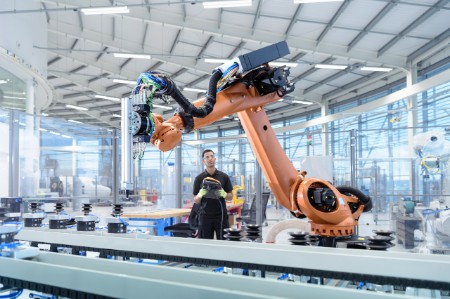AI is a big data game. By better understanding ownership of the data and how it can be shared and combined, meaningful algorithms can be developed to underpin trusted AI programs.
Accessing new revenue streams
For power and utilities companies seeking to access new business models and revenue streams, AI can help them to remain relevant and current beyond the energy transition.
They could, for instance, use AI to compress, analyze and monetize the huge swathes of data moving through the energy ecosystem. Or, they might follow the lead of technology startups by harnessing apps and other innovations to enhance the networked and connected home.
AI is a big data game. At EY, we are working with organizations to define their data architecture, data management and data governance. By better understanding ownership of the data and how it can be shared and combined, meaningful algorithms can be developed to underpin trusted AI programs.
AI challenges are human after all
Though AI enhances human capabilities artificially, many of its limitations are the consequence of human frailties.
Deep-learning AI algorithms, for instance, train themselves by sifting through large volumes of data. From this they learn to identify exceptions to the norm and to make reliable predictions. If utilities fail to cleanse and structure their data before letting AI loose on it, analysis and outcomes will be compromised.
Then there are issues relating to computer power – or rather, the lack of it. Some utilities are reluctant to migrate to cloud computing solutions due to concerns about data privacy and costs. It is, however, a prerequisite for AI given its extensive storage and processing needs. Failure to invest in computing power will impact the data-related insights that utilities can get from AI.
Utilities also have to come to grips with data privacy. They need to understand who owns the data, which data is confidential and how open data should be used and stored if they are to optimize its potential and comply with relevant regulations.
Some utilities recognize, however, that it takes input from both the IT function and the business itself to train a deep-learning network. Increasingly, we see engineers, shop floor workers, asset managers and program managers collaborate on AI capabilities. They jointly define and test a use case; they populate the system with relevant data, rather than drain the entire data pool; together, they deliver the right algorithm training so that data can be mined and its insights extracted.
Collaboration or partnership is a must for any utility. Otherwise, they could struggle with the level of technology sophistication and specialization that more nimble startups readily achieve.
Taking on or teaming up with competitors
AI is not strictly a solo endeavor. Collaboration or partnership is a must for any utility. Otherwise, they could struggle with the level of technology sophistication and specialization that more nimble startups readily achieve.
Some utilities incubate AI solutions in isolation, others collaborate, particularly with startups, to piggyback on their technology know-how.
Many look further afield, collaborating with startups in Germany, the UK, the US and the Middle East to access specialist capabilities. They work with omnichannel, intelligent customer support applications. These are essentially AI-powered chat solutions that understand customer conversations and automate repetitive processes, reducing resource needs and costs.
Some startups even offer platform architectures for storing, consuming and selling energy, while others work with utilities to deliver predictive maintenance solutions. By reducing unnecessary system intervention and delivering timely remedial action when it is needed, they focus costs and resources in all the right places.
How far can AI go?
Frankly, some utilities are slow off the mark; others show varying degrees of AI maturity.
While there is no need for utilities to invest huge sums right now, they must remain alert to startups, which have begun to roll out AI-enabled solutions that are smart – and which customers like. These fast movers will erode utilities’ conventional business models.
Looking ahead, a union between the Internet of Things (which offers a virtual environment through which distributed energy resources can be connected) and blockchain (which facilitates trusted transactions between buyers and sellers of homegrown electrons, without the intervention of a central authority) will reinvent energy delivery and trading.
Quantum computing – although some way off but attracting lots of investment – could be the big AI game changer. It will make deep-learning networks faster, more powerful and able to solve the trickiest challenges, all while storing even larger bodies of data.
Despite all the technology advances going on, many utilities are not riding the wave of innovation and risk losing some or all of their business to competitors. Pushing ahead with AI starts with:
- Defining the AI strategy
- Engaging the business on how to achieve AI transformation
- Early experimentation, with startups or in-house innovation labs or accelerator programs
- Pilots and test cases to understand what AI is and what it could do for the business
AI complements rather than replaces human intelligence. It doesn’t have all the answers to the future of energy; rather, it is the means by which answers might surface. It is the technology that enables tasks, particularly repetitive or labor-intensive ones, to be performed smartly and quickly, reducing costs and improving efficiencies. Those businesses that start adapting and testing AI technology right now stand a better chance of keeping up or working with the innovative startups that are shaking up the power and utilities industry.
Summary
By harnessing AI, the power and utilities industry will be able to turn volumes of customer data into meaningful insights that will contribute to a more secure and stable energy future.


